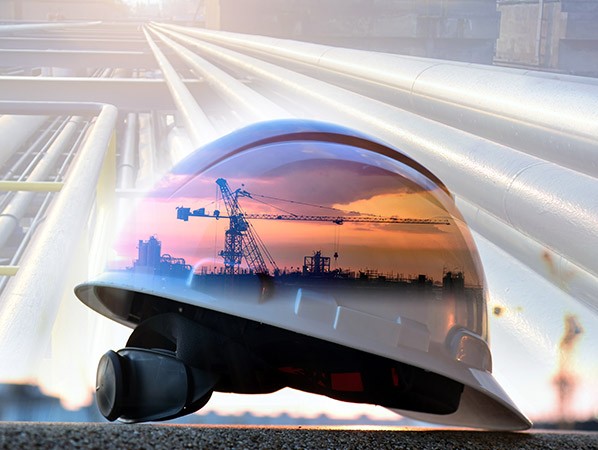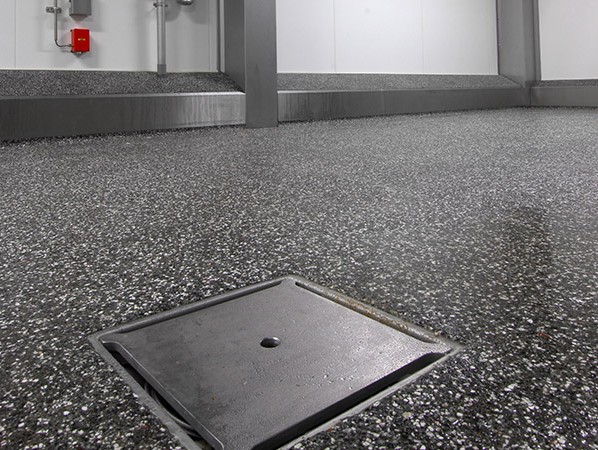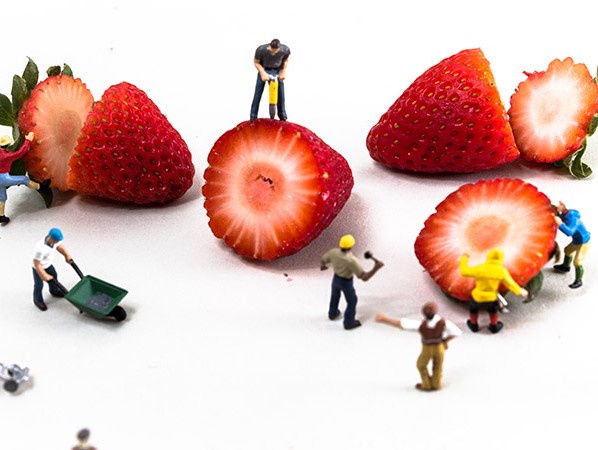
The Dutch construction sector is doing well, and the food sector is following suit. New laws and regulations are an incentive for investments. Because everything needs to be more sustainable, better quality, gasless, more energy-efficient and, of course, food-safe at the same time.
On 14 May, after years of struggling, the Quality Assurance Act was finally adopted in the Senate. This bill regulates the introduction of a new quality assurance system for construction. The purpose of the law is to strengthen the position of private and business construction consumers. Due to the increasing complexity in construction, a revision of the current quality assurance system is necessary. The relationship between the client, construction consumer and the building parties must become most balanced with this law. Minister Kasja Ollegren (Internal Affairs) said the following about this: “If you purchase a home of business premises, you must be able to assume that it suffices; that it is safe and healthy, that you receive the performance you agreed to in advance. There are too many incidents. Therefore, the quality needs to improve”. In order to comply with the law, many quality assurance bodies must be trained in the coming period, and municipalities need to prepare for their changed role. So there is still much work to be done.
Recent CBS figures show that the turnover in construction has been increasing for four consecutive years. ABN AMRO mainly expects the investments in non-residential construction (both for new construction and renovation) to increase in the coming years. Their research shows that in 2018, the value of the permits issued increased by 7.8% to 6.3 billion euros. “The largest part of the investment goes to halls and warehouses: there is a great demand for new distribution centres due to the sharp rise in online shopping. New, fully automated distribution centres are being built for this. Most of them are built in the south of the Netherlands, which has several logistical hubs.”
Another development is that the importance of data is also clearly increasing in the construction sector. Entrepreneurs want to be able to assess the risks involved in a project in advance. Based on digitisation and data, these types of analyses can be made better and better.
In construction, we also see digitisation in significantly improved 3D drawing techniques, whereby buildings van be fully modelled in a three-dimensional environment. This creates a seamless design, not just for the building, but also for the implementation of installations and machines. Martijn Baartmans, director of B-Built BV (which specialises in the realisation of cold stores for food storage), welcomes this development. “This way, we know where to make adjustments in advance. Mistakes can be identified early, which means we can focus on optimisations instead. As a result, there are very few adjustments on the construction site itself. This process may require a bit more energy in the preliminary phase of a construction project, and has a somewhat longer lead time, but results in faster and more efficient realisations. The automation programmes have developed to the point where we can link ‘unit prices’ and even ‘time units’ to materials. As a result, there is a continuous eye for quality, the financial aspect and the planning.”

Going from the positive economic climate to the negative climate change is not as big a step as it seems. When demand grows, raw materials become more scarce, and the energy issue becomes greater. Sustainability is receiving a lot of attention around the world. In the food sector, but certainly also in construction. The aim is to find new, bio-based, building materials and solutions: we read about elephant grass, denim insulation, recycles plastics and hemp walls. Moreover, ever since the VET Act (Energy Transition Progress Act) entered into force in July of last year, there is now a prohibition on natural gas connections with new environmental permits, and the obligation to build gasless with new construction. There is no distinction in terms of the function of a building; the obligation applies to both homes and non-residential buildings. Municipalities can only deviate from the law if there are compelling reasons. The law is already leading to great innovations, such as the electric steam boilers from Scharff Techniek: a gasless solution for the steam demand in food factories.
For all new construction (residential and non-residential), as of 1 January 2020, permit applications also need to meet the new BENG requirements. These are energy performance requirements for ‘Almost Energy-Neutral Buildings’. The House of Representatives will decide on the interpretation of the definitive requirements in the course of this year. These are expected to be published in the Official Gazette after the summer.
The climate requirements also affect innovations for the indoor climate. This is particularly interesting for cold stores. The cooling & freezing that is necessary for food is a major energy consumer. B-Built has a lot of experience in building large-scale cold stores in Western Europe. “Insulation materials in the shell around the process, namely the building, have improved significantly in recent years”, says Martijn Baartmans. “We work closely with producers who are committed to innovations. Among other things, QuadCore was developed from this: a hybrid insulation foam with a smaller closed cell structure, so that even better insulation values can be achieved with thinner panels. This material also greatly improves the fire resistance performance. Moreover, the panels result in extra credits for the BREEAM sustainability certification system.” The company is currently investigating the possibilities for the application of sun-reflecting materials. “These will ensure that the radiation heat on buildings is reduces significantly; which means less energy is required to cool the buildings. Thanks to innovations and further development, better versions have been created recently. Some of these are even eligible for subsidies, which makes them interesting for practical application.”

The introduction of the Quality Assurance Act will not only strengthen the position of clients; the responsibility should also grow, according to ING. “To utilise all possibilities for circular innovation from the entire construction chain, clients have an important task on their hands”, says ABN AMRO. “With tenders, it is best if they make a ‘broad request’ in broad wording. This way, each chain partner can offer their innovative circular construction methods, rather than having them stipulated in strictly nailed-down specifications that do not allow for further innovation.”
Hendrik Ruys, director of Ruys Floors B.V., strongly agrees. “With tenders, things tend to revolve around the lowest price. We think a quality sustainable product and providing expertise is much more important.” Specifically because of their years of expertise in food, they are often involved in the construction plans from an early stage. “People with experience in construction and how food factories are used realise how essential a sustainable and properly laid floor is for the continuity of the production process. A floor in a food factory must be resistant to acids and heavy loads, cleaning agents and extreme temperatures. But more than anything, it needs to be functional and contribute to a safe working environment. A puddle-free floor is essential, because puddles are a source of bacterial growth. The additional user convenience also plays a part: the fact that after cleaning and disinfection, you don’t need to wipe the floor as well, but the water is discharged automatically. So quite a few things are involved.”
That is why he also emphasises the importance of properly identifying the wishes and requirements of the user in advance. “We want to know what products the customer works with, what logistic movements they expert, what temperatures there will be on the floor, and so on. By properly mapping these issues in the preliminary phase, we learn where the potential dangers and pitfalls are. We advise according to the principle: ‘the right floor in the right place’, but also think about wall protection and engineering: about the height of the doors, where the drainage will be, and what the best place for the wells is. In some cases, simple concrete suffices; in a freezing cell, for instance. If so, that is what we recommend to the client, even if we do not supply that floor ourselves.”

HACCP will expire on 1 January 2021. Its replacements are BRC 8, IFS, ISO 22000 and FSSC 22000. What does this mean for the construction sector? “If you aim for the strictest standard, choose BRC-8”, says Silke Potargent, trainer, consultant and expert in the field of construction and renovation at KTBA. “What does this mean for construction in concrete terms? For instance, BRC-8 states that filters for compressed air must be installed in their place of use if it comes in direct contact with the product. This is something you have to integrate in the design. That standard also states that the location must have taken adequate measures to prevent birds from entering buildings or nesting above loading and unloading areas. This obligation is not specified in IFS 6. The update IFS 7, which may include this, has been postponed; it is expected in early 2020.”
All in all, there are quite a few points of attention with (new) construction. Silke lists 7 main items and provides one or more examples with each:
> The location. “Think of environmental consequences for the surroundings or negative influences from the surroundings on the production process. Pay attention to safety and food defence; can the gates be closed, is there an access system for employees, etc.”
> The layout of the company. “Choose an I, L, S, U or O shape, this avoids cross-contamination of waste and end products in the routing. Make sure there can never be leakage above production lines, such as from oil or cooling pipes. Take the position of production lines into account in the context of allergens and contamination. And ensure that allergens cannot get from one line to another, not even via the air.”
> Use of water. “What water quality do you need where in the company, can you recycle it, what do you do with wastewater?”
> Waste control and food waste. “In a bakery, for instance, there is always residual dough, which can be used for the next batch. But, during the construction, you need to make sure this is easily possible. If you want to donate all leftovers to a food bank, there needs to be a storage area for this.”
> Pest control. “Pay attention to pest control in the design by looking critically at where they can nest and where they find water and food. For instance, do not place a container near a meadow or forest edge. This sounds obvious, but it really happens! Do not place any vegetation around your company. Make sure all cracks and gates can be fully closed. To prevent birds from nesting, you see companies hanging colourful balloons around the company. Also discuss possible solutions with a pest control professional.”
> Temperature-controlled spaces. “Try to group cold spaces and warm spaces together, as this results in energy savings. If you go from very cold to warm, then take a sluice into account and make sure you have the right doors.”
> Infrastructure. “This component receives a lot of attention. Think of round corners, no nooks and crannies, a food-safe choice of materials, inspection and cleaning options, hygienic design and no moisture retention.”
Building isn’t just about new construction, even though that provides appealing examples and stories. It is also about renovation and maintenance. And there does not always appear to be enough attention for that. KTBA analysed various audits performed based on the BRC Food, IFS Food and FSCC 22000 schemes. The researchers discovered a striking fact: 1/3 of all deviations are found in criteria that relate to compliance with the basic conditions. Most of these conditions have to do with the design and maintenance of structural and technical facilities, as well as hygiene (cleaning and compliance with hygiene rules). KTBA sees this as a clear signal: “It appears as though maintenance and care for hygiene are given (too) little priority”. They not only plea for better internal supervision of cleaning and compliance with hygiene rules, but certainly also for more attention to maintenance budgets and the execution of maintenance plans.
Sources images:
- Images helmet: ©PHONIX_A PK.SAROTE/SHUTTERSTOCK.COM, Image building: ©PETRMALINAK/SHUTTERSTOCK.COM, Image floor: ©RUYS VLOEREN and Image strawberries: ©SEAN VOELGER/SHUTTERSTOCK.COM
Source: © Vakblad Voedingsindustrie 2019